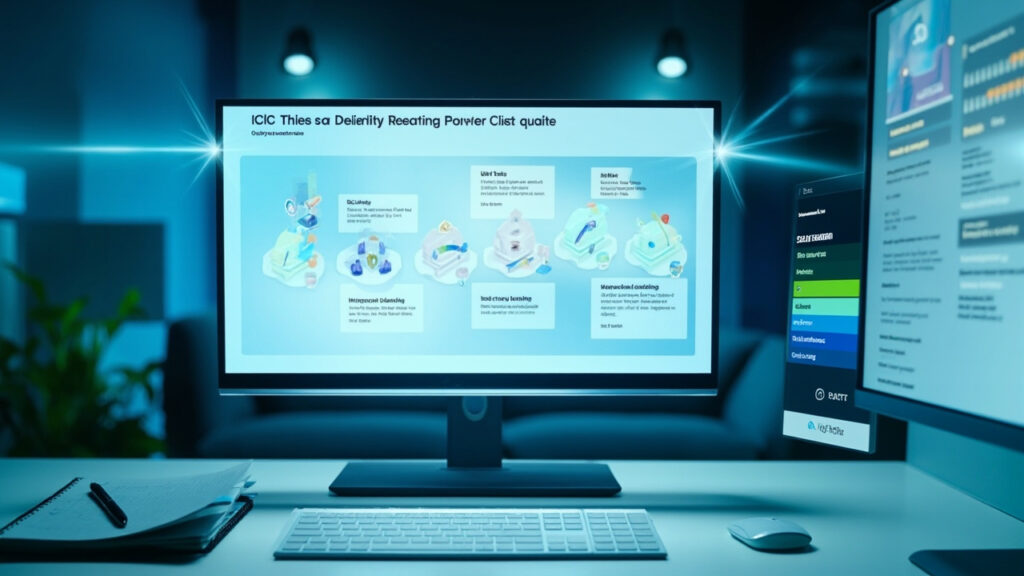In the rapidly evolving world of software development, the pressure to release high-quality, reliable applications has never been higher. As businesses increasingly rely on digital platforms, the cost of software failures can escalate quickly, impacting not only financial bottom lines but also brand reputation and customer trust. This blog post explores the critical relationship between software testing and reliability, unveiling how advanced methodologies and tools are transforming this landscape.
Reliability in software is paramount, as it directly influences user satisfaction and operational stability. However, achieving this reliability is challenging, given the complexity of modern applications and the speed at which they must be developed and updated. Here, we will dissect these challenges, introduce you to cutting-edge solutions like GenQE, and explain how integrating such tools into your development process can elevate the quality and reliability of your software products.
By the end of this article, you’ll have a clearer understanding of the strategies that can be employed to enhance software testing practices, thereby boosting the reliability of your software deployments. Whether you’re a software developer, a quality assurance professional, or a project manager, the insights shared here will help you navigate the complexities of software testing in today’s fast-paced tech environment.
The Vital Role of Software Testing in Achieving Reliability

Software testing is the backbone of software quality and reliability. It involves evaluating a software application to detect differences between given input and expected output. Testing plays a pivotal role in ensuring that the software performs as expected under various conditions, which in turn, enhances the software’s reliability.
Understanding Reliability in Software Systems
Reliability in software systems refers to the probability of a system performing without failure under specified conditions for a specified period of time. It’s about ensuring that software applications can consistently perform their intended functions without any bugs or interruptions that could cause unexpected behaviors or crashes.
Why Testing Matters
Testing is not just about finding bugs. It’s a comprehensive practice that ensures compliance with the specifications and checks the usability, security, compatibility, and performance of the application. By identifying and fixing defects before the software becomes operational, testing saves costs and prevents damage to the user’s hardware or data.
Impact of Inadequate Testing
Inadequate testing can lead to unreliable software that may fail when users most need it. This can lead to user frustration, financial losses, legal issues, and damage to brand reputation. Therefore, rigorous and thorough testing is indispensable in building reliable software.
Challenges in Modern Software Testing

As software systems become more complex and integrated, the challenges in ensuring thorough testing and thereby reliability increase. The traditional methods of software testing are often inadequate in today’s dynamic and fast-paced development environments.
Dealing with Complex Software Architectures
Modern software applications are often built on complex architectures that involve multiple layers of technology stacks and integrations. This complexity makes it difficult to predict how changes in one area of the application will affect other areas, leading to challenges in testing comprehensively.
The Need for Speed in Releases
With the advent of Agile and DevOps practices, the speed of software releases has significantly increased. Testing teams are under constant pressure to provide fast and accurate feedback to the development teams, which can compromise the thoroughness needed for reliability.
Evolving Technologies and Platforms
The constant evolution of programming languages, frameworks, and platforms also poses a significant challenge. Testers must continuously update their skills and testing strategies to cope with these changes.
Integrating AI in Software Testing with GenQE

To address the complexities and speed required in modern software testing, artificial intelligence (AI) has emerged as a game-changer. GenQE, an AI-powered software quality and testing platform, exemplifies how AI can revolutionize software testing.
What Makes GenQE Different?
GenQE leverages AI to automate the generation, execution, and analysis of test cases. This not only speeds up the testing process but also enhances its accuracy and efficiency. By integrating AI, GenQE reduces the manual effort required in crafting test cases and analyzing test results, allowing testers to focus on more critical aspects of software quality.
AI-Driven Test Generation
With AI-Driven Test Generation, GenQE analyzes software requirements and user behavior to automatically create detailed and effective test cases. This not only reduces the dependency on manual test case design but also ensures that the tests cover more scenarios, which might be overlooked by human testers.
Smart Test Execution
Smart Test Execution in GenQE prioritizes test cases based on risk analysis. This ensures that the most critical parts of the application are tested first, optimizing the testing efforts and focusing on high-impact defects that could affect reliability the most.
Enhancing Test Coverage and Efficiency

Achieving comprehensive test coverage is crucial for ensuring the reliability of software applications. However, the sheer volume of test scenarios needed for modern applications can be overwhelming. Here’s how enhanced test coverage and efficiency can be achieved with the right tools and strategies.
Importance of Extensive Test Coverage
Test coverage measures the amount of testing performed by a set of tests. It’s directly linked to the reliability of the application, as higher coverage typically means fewer bugs and issues in the final product. However, manually achieving high test coverage can be time-consuming and prone to errors.
Utilizing AI for Better Coverage
AI-powered tools like GenQE can intelligently analyze the code and pinpoint areas that are critical or prone to errors but have not been thoroughly tested. This not only improves the quality of testing but also ensures that the application is reliable across different scenarios and use cases.
Case Study: Improving Test Efficiency in a Tech Company
In a recent implementation, a tech company used GenQE to enhance their testing processes for a cloud-based application. By leveraging AI-driven test case generation and smart test execution, they were able to reduce their testing time by 40% while improving the test coverage by 60%. This led to a significant improvement in the reliability of their product, evidenced by a 30% reduction in customer-reported issues post-launch.
Continuous Integration and Continuous Deployment (CI/CD)

The integration of software testing into the CI/CD pipeline is crucial for maintaining high reliability in continuous delivery environments. Here’s how seamless integration of testing tools like GenQE can make a difference.
Role of CI/CD in Software Reliability
CI/CD practices are designed to ensure that code changes are automatically built, tested, and prepared for a release to production. This helps in detecting and addressing defects early in the development cycle, which is essential for maintaining software reliability.
Benefits of Integrating Testing Tools in CI/CD
Integrating tools like GenQE into the CI/CD pipeline automates the testing process, ensuring that tests are run consistently and results are fed back to developers promptly. This not only speeds up the release process but also ensures that the code is tested thoroughly, improving the reliability of the software.
Example: Enhancing CI/CD with GenQE
A financial services firm integrated GenQE into their CI/CD pipeline and noticed immediate improvements. The AI-powered defect detection feature of GenQE helped them identify critical bugs early, reducing their hotfix releases by 50%. This not only saved costs but also enhanced the stability and reliability of their services.
Advanced Analytics and Proactive Problem Solving

In the quest for software reliability, the ability to predict and prevent potential issues before they become actual defects is invaluable. Advanced analytics provided by tools like GenQE can play a pivotal role in this proactive approach.
Leveraging Data for Predictive Analytics
GenQE’s advanced analytics capabilities allow teams to use data from past testing cycles to predict where future failures might occur. This predictive approach helps in focusing testing efforts where they are most needed, improving the efficiency and effectiveness of the testing process.
Real-World Application: Using Analytics to Prevent Failures
An e-commerce company used GenQE’s analytics tools to analyze their holiday sale application. By predicting the areas of the application that were most likely to fail under heavy load, they were able to proactively optimize those areas. As a result, they experienced a 70% reduction in downtime during the sale period compared to previous years.
Conclusion: Embracing the Future of Software Testing

The landscape of software testing is continually evolving, and the integration of AI-powered tools like GenQE represents the cutting edge of this evolution. By automating and optimizing testing processes, these tools not only enhance the efficiency and coverage of tests but also significantly improve the reliability of software applications.
For organizations aiming to enhance their software quality, reduce operational costs, and accelerate their development cycles, adopting intelligent testing solutions is not just an option—it’s a necessity. As we have seen through various examples and case studies, the benefits of such tools are tangible and can lead to substantial improvements in software reliability.
If you’re looking to stay ahead in the competitive field of software development, consider exploring advanced testing platforms like GenQE. They could be the key to unlocking higher efficiency, better reliability, and ultimately, greater success in your software development endeavors.
Discover More Innovative Solutions
Want to learn more about the tools and technologies discussed in this article? Explore how these innovations can be tailored to your specific needs and workflow requirements.
Our team of experts is available to answer your questions and provide personalized insights into how modern solutions like GenQE can address your specific challenges.